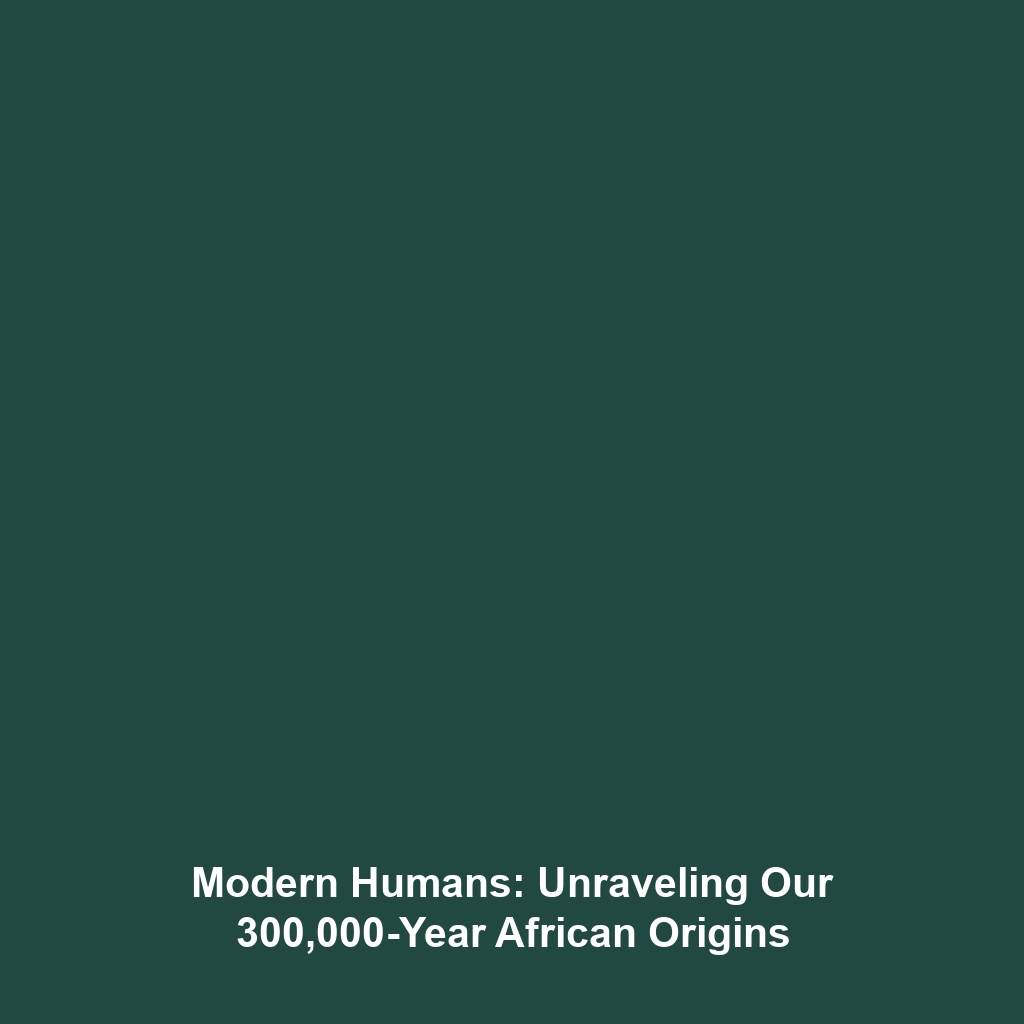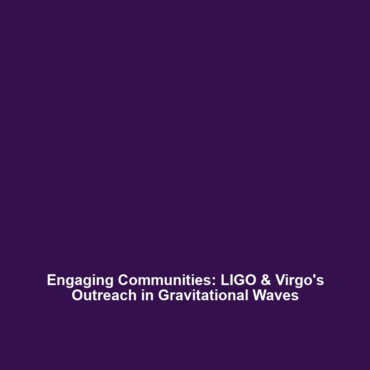Emergence of Modern Humans: A Look at Our African Origins
Introduction: The emergence of modern humans, Homo sapiens, approximately 300,000 years ago in Africa marks a significant milestone in the field of human evolution. This pivotal moment laid the groundwork for the complex journey of humanity, influencing not only biological development but also cultural evolution. Understanding this emergence is crucial, as it connects various aspects of anthropology, archaeology, and genetics, shedding light on how modern humans evolved and adapted in diverse environments across the globe.
Key Concepts in Human Evolution
The emergence of modern humans in Africa encompasses several key concepts that are foundational to our understanding of human evolution:
- Anatomical Changes: Modern humans exhibit distinct anatomical features that differentiate them from earlier hominins, including a rounder skull and smaller brow ridges.
- Behavioral Evolution: The development of complex language and social structures has played a crucial role in the success of Homo sapiens.
- Cultural Practices: Early evidence of tool-making and artistic expression suggests the emergence of advanced cognitive abilities.
These key concepts illustrate how the emergence of modern humans fits into the broader narrative of human evolution, showcasing the interplay between biology and environment.
Applications and Real-World Uses
The study of how modern humans first appeared in Africa has profound implications in several areas:
- Anthropological Research: This knowledge informs anthropological studies that explore human behavior and social structures throughout history.
- Educational Programs: Understanding human origins fosters educational initiatives aimed at promoting awareness of our shared history.
- Genetic Studies: Research into the genetic makeup of modern humans continues to reveal information on migration patterns and health.
These applications demonstrate how understanding the emergence of modern humans is vital in various fields related to human evolution.
Current Challenges in Studying Human Evolution
Despite progress in understanding the emergence of Homo sapiens, several challenges persist:
- Incomplete Fossil Record: The fossil evidence available is often fragmentary, making it difficult to draw definitive conclusions.
- Technological Limitations: Some ancient DNA is damaged or degraded, hindering genetic analysis and understanding of early human populations.
- Interpretative Variability: Different interpretations of archaeological data can lead to conflicting theories regarding human origins.
Future Research and Innovations
Looking ahead, several innovative research avenues are opening up:
- Advanced Genomic Technologies: Innovations in genetic sequencing may soon provide clearer insights into human ancestry.
- Interdisciplinary Approaches: Combining archaeology, genetics, and anthropology can yield a more comprehensive understanding of human evolution.
- Artificial Intelligence: AI technologies are improving the analysis of large datasets, leading to breakthroughs in our understanding of early human behaviors.
Conclusion
In summary, the emergence of modern humans in Africa around 300,000 years ago is not just a crucial event in human evolution; it is a tapestry woven from diverse threads of biology, culture, and environment. Continued research in this area promises to unravel even more complexities of our past. For further exploration into human evolution, consider reading our articles on prehistoric cultures and anthropological evidence of early humans.




